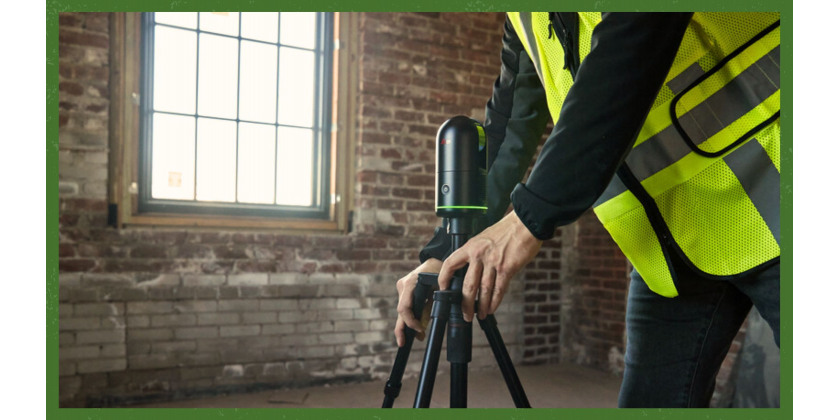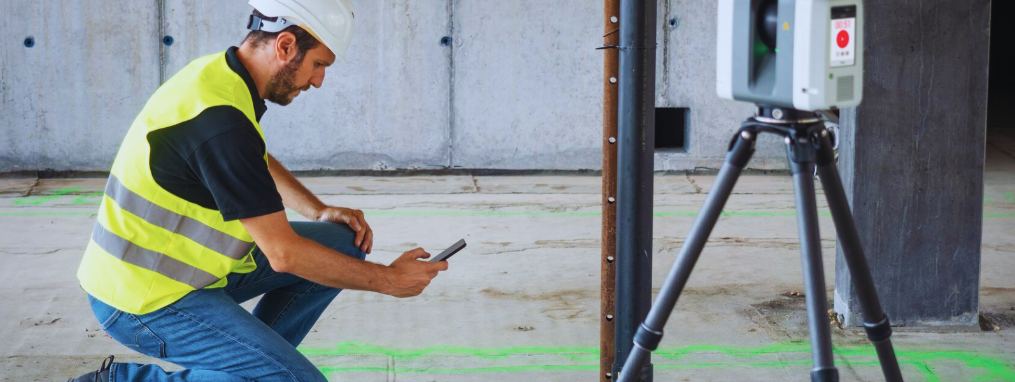10 tips for laser scanner usage

Discover the ten essential tips for effectively using a laser scanner. Optimize your experience, obtain precise results, and maximize efficiency in your projects.
Optimize your experience with the laser scanner for greater efficiency and precision
The laser scanner is an invaluable tool in various fields, from architecture and engineering to topography and the film industry. Its ability to quickly capture three-dimensional data with millimetric precision has revolutionized the way we take measurements and capture spatial information.
In this article, we present ten essential tips for effectively using a laser scanner. Whether you are an experienced professional or a beginner interested in harnessing this technology, these tips will help you achieve the best results and optimize your experience with the laser scanner.

1. Familiarize yourself with your laser scanner and its associated software
Before using a laser scanner, it is essential to familiarize yourself with the equipment and the associated software. Request a demonstration of the equipment and software to understand its basic operation and explore the specific features of the software used to process the captured data.
The better you understand the scanner and software's operation, the more efficiently you can use it and take advantage of all its capabilities.
Remember that at topotienda.com, we are at your disposal for anything you need. Just give us a call or send us an email, and we will be delighted to show you any Leica Geosystems laser scanner, whether new or second-hand.
2. Plan your scans in advance
A good scanning plan is crucial for obtaining accurate results and avoiding unnecessary rescan.
Before you start, identify the areas or objects you want to scan and create a detailed plan that includes the location of reference points, scanning angles, necessary overlap between scans, and other relevant aspects.
Proper planning will save you time and provide more consistent and complete data.
3. Prepare the scanning area
Make sure that the area you want to scan is properly prepared.
Remove any obstacles or elements that may interfere with data capture, such as moving objects, mirrors, highly reflective surfaces, or intense light sources. Also, consider environmental conditions such as lighting and humidity that can affect scan quality.
By adequately preparing the scanning area, you will minimize errors and maximize the quality of the captured data.
4. Use markers or reference points
To ensure precise alignment of individual scans and the creation of a consistent 3D model, it is advisable to use markers or reference points. These can be simple objects such as reflective spheres or reference plates that the laser scanner can easily detect.
Place the markers at strategic points in the scanning area and ensure they are clearly visible from multiple angles. Markers will allow you to obtain more accurate scans and facilitate subsequent alignment and processing.

5. Ensure data quality
The quality of the captured data is crucial for obtaining accurate and detailed results. Ensure that the laser scanner is correctly calibrated and configured before each scan.
Check the scanner's resolution and accuracy, adjust the scanning speed as needed, and ensure there are no external interferences during the scanning process. Also, perform regular control scans to verify the accuracy of the captured data. Maintaining high data quality is essential for reliable results.
6. Manage and organize your scanned data
Once you have captured data with the laser scanner, it is important to manage and organize it properly. Use a consistent storage and labeling system to facilitate data retrieval in the future. Additionally, create backups of the scanned data in different locations to prevent accidental loss.
Organize the data into logical folder structures and use descriptive metadata to ease future search and analysis. Good data management will allow you to maximize the usefulness of the scans in the long term.
7. Learn to use post-processing tools
Post-processing of scanned data is a fundamental part of the laser scanning workflow. Dedicate time to learn the post-processing tools and techniques available in the software associated with the laser scanner you are using.
These tools will allow you to clean, filter, merge, and enhance the scanned data, as well as generate 3D models and extract useful information. The more proficient you become in post-processing tools, the more effectively you can work with the captured data.
Our specialists will teach you how these tools work. You will receive proper training with the purchase of your laser scanner.
8. Regularly update your scanning software
Laser scanning technology is advancing rapidly, so it is important to keep your scanning software up to date. Software updates often include improvements in accuracy, efficiency, and overall functionality of the laser scanner.
Keeping your software up to date will allow you to make the most of the latest enhancements and ensure you are using the most stable and reliable version of the software.
9. Continuously train in laser scanning technology
Laser scanning is a constantly evolving field, with new techniques and technologies emerging regularly. To stay up to date and make the most of your laser scanner, it is important to invest time in continuous training and learning.
Attend courses, seminars, and conferences related to laser scanning and stay informed about the latest trends and advances in the field. Ongoing training will help you improve your skills and use your laser scanner optimally.

10. Share and collaborate with the laser scanning community
The community of laser scanning professionals and enthusiasts is an excellent source of knowledge and experience. Join online forums, discussion groups, and social networks related to laser scanning to share your experiences, ask questions, and learn from other users.
Collaborating with the community will provide fresh ideas, solutions to common challenges, and new perspectives on using the laser scanner. Additionally, you can establish valuable professional relationships in the laser scanning field.
Here is one of the world's largest Reality Capture groups of Leica Geosystems:
Conclusion
Effective use of a laser scanner can make a difference in the quality and efficiency of your work. By following these ten essential tips, you can optimize your experience with the laser scanner, obtain accurate and detailed results, and maximize the potential of this powerful tool.
Remember to familiarize yourself with your scanner and its software, plan your scans in advance, prepare the scanning area, use markers or reference points, ensure data quality, and learn to use post-processing tools.
You can talk to our topographic equipment rental department to try out your scanner before buying it. We have equipment with the latest technology and a team specifically trained in laser scanning equipment and software.
Additionally, keep your software up to date, continuously train in laser scanning, and leverage the community of professionals and enthusiasts to share and collaborate. By following these tips, you will become an expert in using the laser scanner and achieve outstanding results in your projects.
Discover the full potential of laser scanning and elevate your capabilities to a new level!







